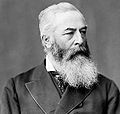| Name | Years of Command | Photo |
|---|
| Surgeon-General Darby Bergin | 1868 (first) – 1885 |  |
| Lieutenant Colonel James Henry Bredin | 1885–1897 |  |
| Lieutenant Colonel Roderick R. McLennan | 1897–1900 |  |
| Lieutenant Colonel Gordon Baker VD | 1900–1903 |  |
| Colonel Hiram A. Morgan | 1903–1908 |  |
| Lieutenant Colonel Robert Smith | 1908–1910 |  |
| Lieutenant Colonel Alexander G.F. Macdonald | 1910–1920
Honorary Lieutenant-Colonel 1925–1942
Honorary Colonel 1942–1948 |  |
| Lieutenant General Archibald C. MacDonell | Honorary Colonel 1921–1940 |  |
| Colonel William H. Magwood | 1920–1924 |  |
| Colonel John A. Gillies VD | 1924–1929 |  |
| Lieutenant Colonel Frederick G. Robinson MC, VD | 1929–1932 |  |
| Lieutenant Colonel William J. Franklin | 1932–1934
C.O. 1st Battalion 1940
C.O. 2nd Battalion 1940–1945
Honorary Lieutenant-Colonel 1956–1961
Honorary Colonel 1961–1974 |  |
| Lieutenant Colonel Gordon N. Phillips ED | 1934–1938 |  |
| Lieutenant Colonel George D. Gillie MC, ED | 1938–1940 |  |
| Colonel Richard T.E. Hicks-Lyne MC, ED | C.O. 1st Battalion 1940–1942 |  |
| Lieutenant Colonel W. S. Rutherford ED | C.O. 1st Battalion January 1942 – August 1942 |  |
| Brigadier Michael S. Dunn OBE, CD | C.O. 1st Battalion September 1942 – December 1942 |  |
| Lieutenant Colonel G.H. Christiansen | C.O. 1st Battalion December 1942 – August 1944 |  |
| Colonel R. Rowley DSO, ED | C.O. 1st Battalion August 1944 – March 1945 |  |
| Lieutenant Colonel N.M. Gemmell DSO | C.O. 1st Battalion March 1945 – May 1945 |  |
| Colonel Donald C. Cameron | C.O. 3rd Battalion 1945–1946 |  |
| Lieutenant Colonel Donald R. Dick | 1945–1949 |  |
| Lieutenant Colonel Arthur M. Irvine MBE, CD | 1949–1952 |  |
| General H.D.G. Crerar CH, CB, DSO, CD | Honorary Colonel 1951–1956 |  |
| Lieutenant Colonel J.P. Donihee CD | 1952–1957 |  |
| Lionel Chevrier PC, CC, QC | Honorary Lieutenant Colonel 1948–1956
Honorary Colonel 1956–1961 |  |
| Colonel Frederick M. Cass CD, QC | Honorary Lieutenant Colonel 1961–1974
Honorary Colonel 1974–1983 |  |
| Lucien Lamoureux QC | Honorary Lieutenant Colonel 1974–1980 |  |
| Lieutenant Colonel D.C. Stewart MC, CD | 1957–1962
Honorary Lieutenant Colonel 1983–1986
Honorary Colonel 1986–1989 |  |
| Lieutenant Colonel George E. Edgerton ED, CD | 1962–1964
Honorary Lieutenant Colonel 1980–1983
Honorary Colonel 1983–1986 |  |
| Lieutenant Colonel John Mullineux CD | 1964–1967 |  |
| Lieutenant Colonel Donald R. Fitzpatrick CD | 1967–1970
Honorary Lieutenant Colonel 1986–1989
Honorary Colonel 1989–1993 |  |
| Brigadier General William J. Patterson OMM, CD | 1970–1974
Honorary Lieutenant Colonel 1989–1993
Honorary Colonel 1993–present |  |
| Lieutenant Colonel Thomas J. O'Brien CD | 1974–1977
Honorary Lieutenant Colonel 1993–present |  |
| Lieutenant Colonel William J. Shearing | 1977–1980 |  |
| Lieutenant Colonel J.R.W. McLauchlan CD | 1980–1982 |  |
| Lieutenant Colonel William L. Masson CD | 1982–1985 |  |
| Lieutenant Colonel James F.C. Sheflin CD | 1985–1987 |  |
| Lieutenant Colonel J. Keith Simpson CD | 1987–1990 |  |
| Lieutenant Colonel Robert J. Brooks CD | 1990–1994 |  |
| Lieutenant Colonel Brent L. Lafave CD | 1994–1998 |  |
| Lieutenant Colonel A.F. Robertson CD | 1998–2000 | |
| Lieutenant Colonel S.L.D. Julien CD | 2000–2003 | |
| Lieutenant Colonel A.J.G Rochette CD | 2003–2007 | |
| Lieutenant Colonel W.R. Clarke CD | 2007–2010 | |
| Lieutenant Colonel R.C. Duda CD | 2010–2013 | |
| Lieutenant Colonel S.J. Young CD | 2013–2016 | |
| Lieutenant Colonel C.E. French CD | 2016–2019 | |
| Lieutenant Colonel R. Hartman CD | 2019–2023 | |
| Lieutenant Colonel H.G. Scharf CD | 2023–2024 | |
| Lieutenant Colonel R.P. Hendy CD | 2024–Present | |























































